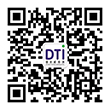3D Printed Toys Amazon CPC Testing Process
Date:2025-07-14 10:33:17 Classification
:【question】 Visits:
According to the U.S. Consumer Product Safety Improvement Act (CPSIA), all products for children aged 12 and under sold on Amazon must be CPC certified to prove that they meet safety standards. Products that fail to pass the certification will be forced to be removed from the shelves.
1. Necessity of testing
According to the U.S. Consumer Product Safety Improvement Act (CPSIA), all 3D printed toys for children aged 12 and under must be CPC certified to prove that they meet:
1. Physical safety standards (ASTM F963-17)
2. Chemical limits (lead ≤100ppm, phthalates ≤0.1%)
3. Small parts warning label (anti-choking risk)
> ⚠️ Products that fail to pass the certification will be forced to be removed from Amazon.
2. Core testing items
For the characteristics of 3D printed toys, focus on the following tests:
1. Physical and mechanical properties (ASTM F963-17)
- Small parts test: prevent detachable parts from being swallowed
- Drop/torque test: verify structural strength (especially interlayer bonding parts)
- Sharp edge inspection: eliminate scratch risks
2. Chemical migration (CPSIA)
- Heavy metals: 19 items including lead (Pb) and cadmium (Cd)
- Phthalates: 6 plasticizers including DEHP/DBP/BBP ≤ 0.1%
> If multi-color filaments are used, separate tests by color are required.
3. Additional items for special scenarios
- Electric function: circuit safety test is required (EN 62115)
- Food contact parts (such as teethers): comply with FDA 21 CFR
III. Processing process and cycle
Step 1: Material preparation
- Required documents:
- Product manual, bill of materials (BOM)
- 3D printing material safety data sheet (MSDS)
- Test application form (specify applicable age and function)
Step 2: Send samples
- Quantity requirements: 2-3 complete samples (including packaging and accessories)
- Special treatment: unpainted/untreated prints must be provided
Step 3: Laboratory testing
- Cycle:
- Conventional: 5-7 working days (basic items)
- Expedited: 3 working days (cost +30%~50%)
- Approved laboratory: must select CPSC authorized agency (such as Dezewei)
Step 4: Generate CPC certificate
- Certificate content:
- Manufacturer/importer information, product description, production date and location
- Test standard list, laboratory name and address
> Note: CPC certificates are issued by manufacturers, and laboratories only provide test reports.
Step 5: Compliance labeling
- Product packaging:
- Add "Small Parts Warning" (for children under 3 years old)
- Clearly mark "Applicable age" (such as "Not for children under 3 years")
IV. Key points
1. Material compliance priority:
- Choose filaments that have passed RoHS/REACH certification to reduce the risk of excessive phthalates.
2. Structural design to avoid risks:
- Avoid detachable small parts (such as decorative parts <3cm), or print non-detachable structures in one piece.
3. Annual update requirements:
- Material formula or design changes require retesting.




 Shen Gongwang Security: 44030602006947
Shen Gongwang Security: 44030602006947